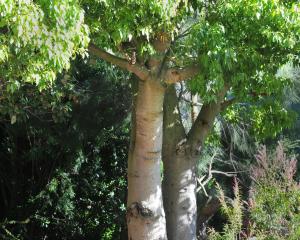Labelled specimens allow you to brush up on your tree knowledge and compare related plants, all on a few urban hectares.
An example is the diverse genus Melicytus.
All 11 Melicytus species that have been described for New Zealand can be hunted out in the native plant collection.
Melicytus ramiflorus is the common mahoe or hinahina, currently providing winter fruit for local birds.
Melicytus macrophyllus, a North Islander, is similar but stockier in habit, with handsome dark green leaves.
Melicytus lanceolatus is a fast-growing, narrow-leaved species. It prefers cool spots with plenty of rainfall. Melicytus novae-zelandiae, currently in flower, forms a dense scrub in coastal areas of the far North Island.
Melicytus chathamicus hails from the windy Chatham Islands and grows into a round-canopied tree up to 12m tall.
Melicytus obovatus is a well-behaved but seldom-seen garden plant that would make an excellent hedge.
Melicytus micranthus is happiest in swampy alluvial soils.
It has densely interlacing, twiggy branches.
Melicytus flexuosus is a quirky-looking shrub which has hardly any leaves and looks like a blob of wire netting.
Melicytus crassifolius, from coastal and harsh rocky inland areas, can form thick, springy mats, or grow into a shrub of about 1m.
Melicytus alpinus, porcupine shrub, provides habitat and food for native lizards.
Melicytus drucei, a tangled shrub, is nationally endangered, inhabiting one small area in Egmont National Park.
Visit and catch them all like Pokemon!
- Kate Caldwell is curator of the native plant collection at Dunedin Botanic Garden.











